The Conservative manifesto stresses the importance of ethnically diverse recruitment to the civil service – but Gemma Byrne finds that ethnic minorities are still woefully underrepresented at the top and still experience discrimination.
The Civil Service Talent Action Plan and appointment of a Race Champion are just two recent attempts to help talented civil servants from underrepresented backgrounds progress. But despite increasing diversity across the whole civil service, progress at senior levels is stalled and ethnic minority civil servants are still reporting experiences of discrimination.
The percentage of civil servants from an ethnic minority is lower than in the population as a whole.
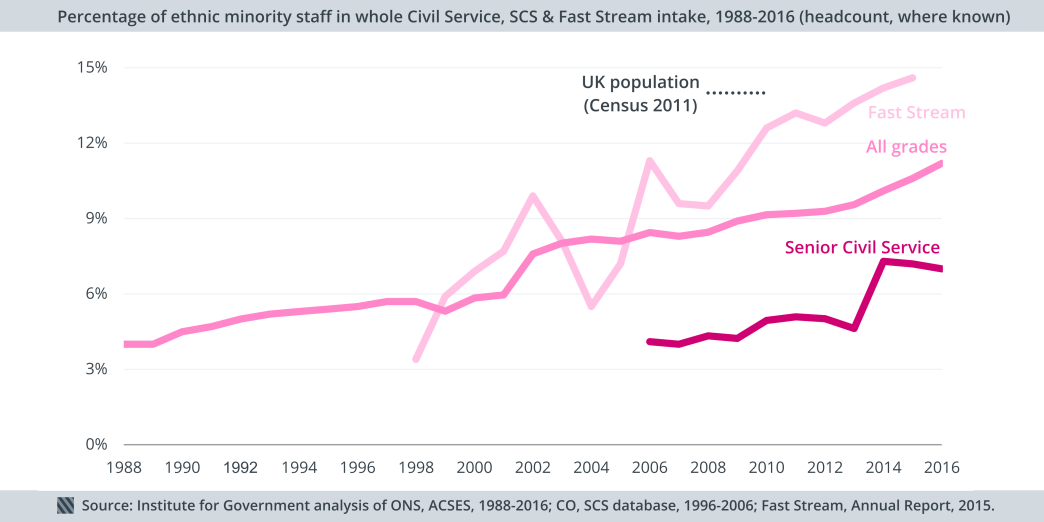
In 2016, 11.2% of all civil servants declaring their ethnicity identified as BAME (Black, Asian and Minority Ethnic), up from 9% in 2010, and 4% in 1988. However, this is still lower than the national population figure of 14% from the 2011 census.
In 2016, ethnic minorities in the civil service still feel discriminated against.
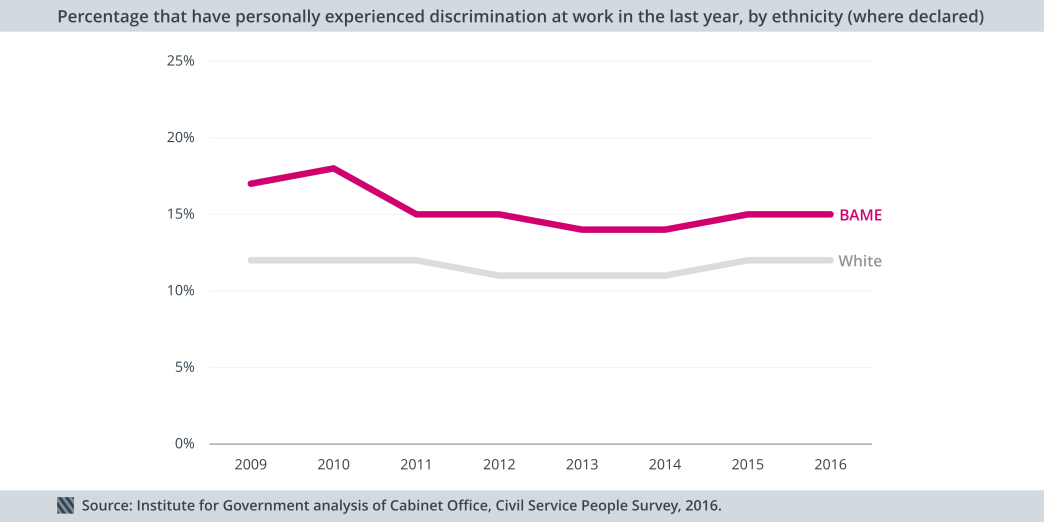
When it comes to discrimination, the civil service still has some work to do. In the Civil Service People Survey 2016, 15% of BAME civil servants said they had personally experienced discrimination at work in the past 12 months, compared to 12% of white civil servants.
This is an improvement on 2010, when 18% of BAME civil servants expressed that they had experienced discrimination at work. However, since 2011 little progress has been made, with a persistent gap of three percentage points between white and BAME civil servants.
Engagement scores are higher for BAME civil servants on most themes, but not all – including inclusion and fair treatment.
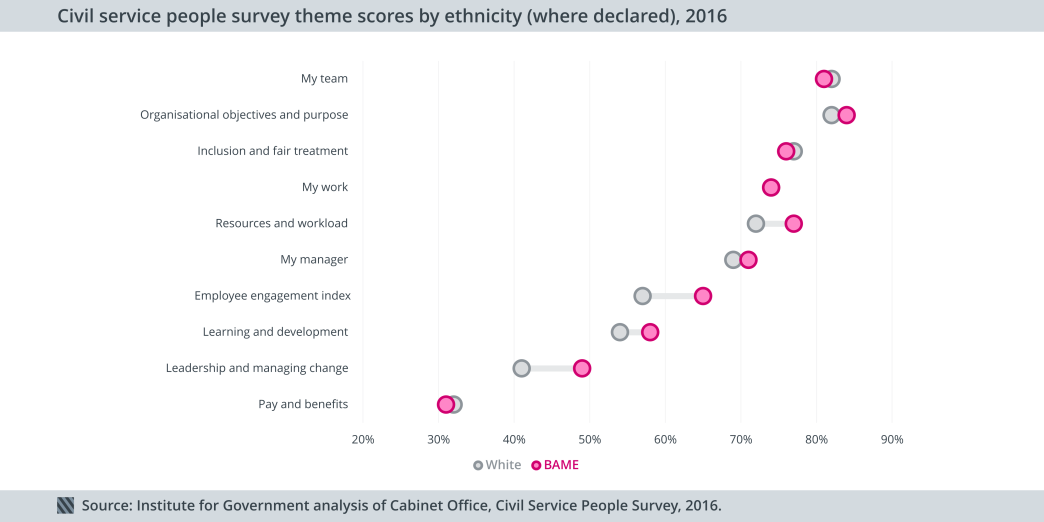
The Civil Service People Survey shows that for the majority of themes in the survey, BAME civil servants’ engagement scores are higher than those of white civil servants (considerably so on resources and workload, overall engagement, and leadership and managing change). BAME civil servants score slightly lower than white civil servants on inclusion and fair treatment, pay and benefits, and what they think about their team.
The proportion of civil servants from ethnic minorities is lower at more senior grades.
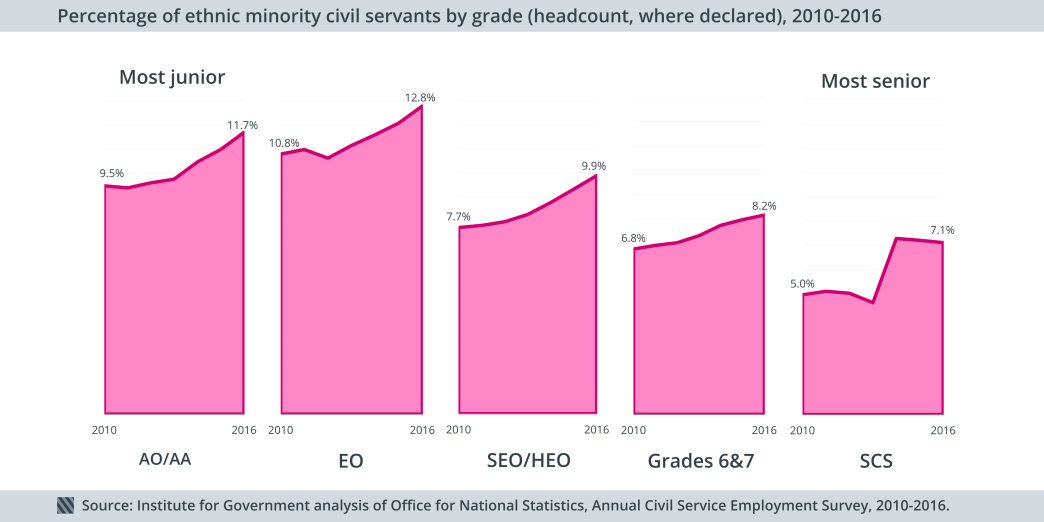
Progress to senior civil service level has stalled, and just 7.1% of senior civil servants are from an ethnic minority. There are also no permanent secretaries from an ethnic minority in charge of a Whitehall department.
In 2016, the highest percentage of ethnic minorities could be found in lower grades (Executive Officer (EO) and Administrative Officer/Administrative Assistant). This percentage then declines at each more senior grade, although the percentage has increased at every grade except SCS since 2010.
The Fast Stream – a key pipeline for future civil service leaders – has improved its representation of minority ethnic groups over time. In 2015, with 14.2% of Fast Streamers from minority ethnic backgrounds, it was equal to the national population figure from the 2011 census.
A high percentage of ethnic minority staff does not equate to a high percentage of ethnic minority senior civil servants.
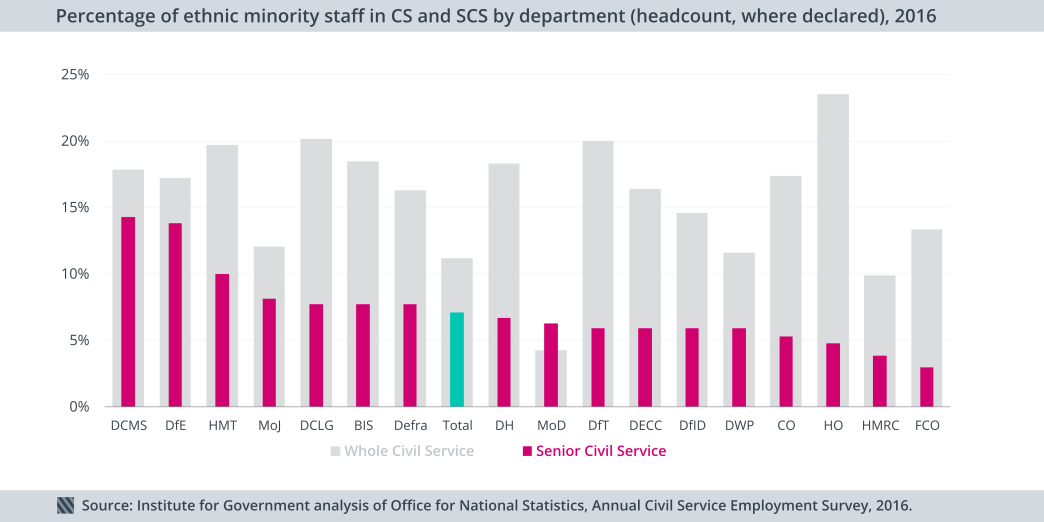
Some departments have more of a problem than others:
- FCO has the lowest percentage of BAME senior civil servants (2.9%).
- The Home Office has the biggest difference between the percentage of BAME civil servants (23.5%) and senior civil servants (4.8%).
- MoJ, which has Civil Service Race Champion, Richard Heaton, as Permanent Secretary, has only 8% of senior civil servants from BAME backgrounds. Conversely, DCMS, which performs best on female representation in the SCS, also comes top on BAME representation in the SCS (14.3%).
Several permanent secretaries have outlined their objectives to increase the representation of minority groups in their departments, with some specifically aiming to address the underrepresentation in their senior ranks. But there is still a long way to go.
A lot of data on diversity is missing.
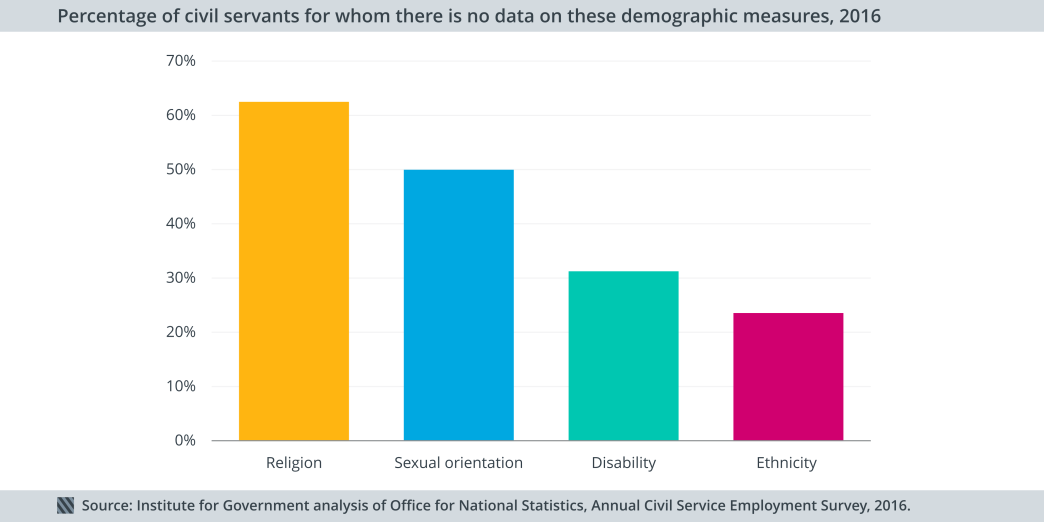
Our analysis is only based on those who have declared their ethnicity, but the ethnicity of over 23% of civil servants is unknown. This is not only the case for ethnicity, but also for disability status (31%), sexual orientation (50%) and religion (62%).
There may be good reasons why civil service staff don’t want to declare some personal characteristics, but this does make it difficult to know how well minority groups are represented in the civil service.
Over the years there have been definite signs of improvement in the representation of ethnic minorities in the civil service. However, the underrepresentation of ethnic minorities at the senior civil service level, and the discrimination faced by BAME staff continues. Along with improving the diversity of the civil service as a whole, the next government needs to ensure that ethnic minorities within the civil service are equally represented at all grades.
- Supporting document
- Whitehall monitor 17.pdf (PDF, 2.17 MB)
- Topic
- Civil service